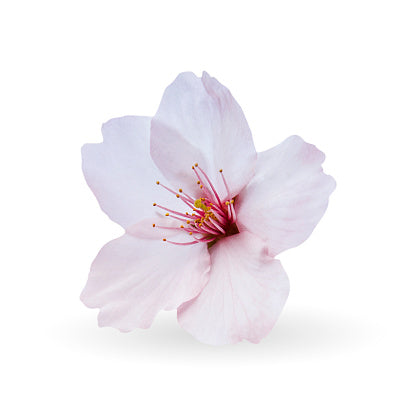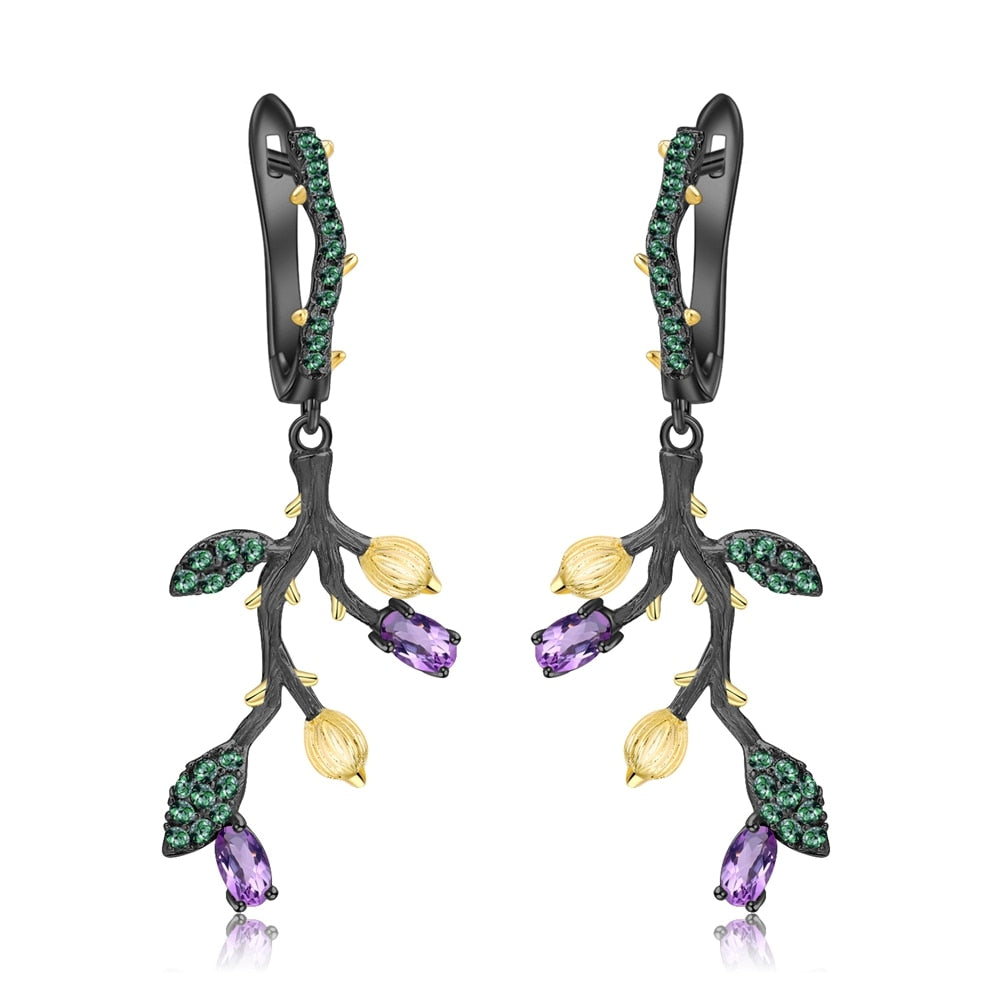EkoWorld Jewels
Ivy Earrings with Berries in 925 Silver and Natural Stone
Ivy Earrings with Berries in 925 Silver and Natural Stone
Couldn't load pickup availability
Free shipping
Free shipping
Returns and exchanges within 30 days
Returns and exchanges within 30 days
Returns and exchanges up to 30 days after receiving your order!
The return can be requested within 14 days of receiving the order, and made within 30 days after receiving the order.
10% discount if you add it in the 🛒
10% discount if you add it in the 🛒
Unlock an additional discount when you buy multiple items!
The more you buy, the more you save! ❤️
The more you buy, the more you save! ❤️
The more you buy, the more you save!
Buy 2 Items with 15% discount
Buy 3 Items with 20% discount
Buy 4 Items for 25% off
- Description
- Specifiche
The common ivy ( Hedera helix ) is a climbing shrub which is often destroyed, because it is "accused" of being a parasitic species which damages and degrades the wood.
It's false! Ivy plays an ecological role of fundamental importance for the balance of the forest and for the fauna .
First of all, it should be remembered that Nature does nothing by chance. Every species, even the most unwelcome and insignificant, occupies a key place in the complex ecological dynamics. Sometimes this role escapes not only ordinary people but also scientists who are frequently forced to revise the most consolidated theories in the light of new knowledge.
Many farmers and forestry operators are convinced, for example, that ivy is a "harmful" species responsible for suffocating and drying up trees and for this reason they cut it down, believing they are doing a useful service to the forest. Let's dispel a myth of poor botanical knowledge and poor silvicultural management: ivy does not feed on tree sap, it is a climber (like the vine) and seeks only support from the host plant , a guardian to wrap itself around .

Trimming ivy is wrong for a number of reasons. Here they are:
– the plant offers shelter to numerous species of birds that frequently nest there;
– its berries are consumed by numerous species of birds (thrushes, blackbirds, starlings, etc.) which, in certain seasons of the year, feed almost exclusively on its fruits. By suppressing the ivy, an indispensable trophic source for the avifauna is lost and a drastic impoverishment of the fauna of the woods is determined;
– the evergreen leaves are appetizing by rare species of butterflies (ivy moth, Celastrina argiolus) and by herbivorous animals such as deer, fallow deer, roe deer especially in the winter season, when other food sources are scarce;
– the leaves, falling to the ground, decompose rapidly and form good quality humus
– anti-pollution function : NASA, the American Space Agency, has disclosed the characteristics of some plants with evident “phytodepurative” properties. Among these is the ivy, which seems to have shown remarkable capabilities: according to NASA it absorbs 90% of benzene and over 10% of trichlorethylene, so we can certainly define it as an "anti-pollution plant".
Finally, ivy is a plant used for herbal purposes . Contains saponins, tannins, resins and mineral salts; it is an expectorant, an emmenagogue and antureumatic. For cosmetic use, the infusion added to bath water is astringent and helps anti-cellulite treatments; used to rinse hair after shampooing, it makes them shiny and dark. Be careful though, the berries are toxic if ingested, especially for children.
Description . Very rustic and evergreen plant, with dark green leaves, which can reach 20-30 m. It has sterile branches characterized by aerial roots and leaves with 3-5 lobes often streaked with white; the branches bearing the flowers have no aerial roots and the leaves are entire and ovate-rhomboid in shape. The small, greenish-yellow flowers, gathered in terminal racemes, appear in summer and, in the following spring, give rise to globular black-bluish berries. Very common, especially in woods and hedges, from the sea to the mountainous area up to 1,000-1,500 m of altitude. It is often grown as an ornamental plant with several selected varieties.
Mythology : “ Ivy is Dionysus' favorite plant. The god was often called "the Crowned One of Ivy" or even Kissòs. the ivy. This liana had saved him twice in Cadmus. Shortly after his birth, the nymphs immersed him in the Kissusa spring, of ivy, and it was on Mount Helicon (hélix is another name for ivy) that he was raised” . Source : Mythology of trees, J. Brosse, Rizzoli, 2007.
30 DAY MONEY BACK GUARANTEE
are you not satisfied with your purchase? You will have the option to return it for a full refund within 30 days of payment.
- √ ORECCHINI IN ARGENTO 925 STERLING AAA ALTA QUALITÀ: I nostri orecchini sono realizzati in argento 925 sterling massiccio, noto per la sua resistenza, luminosità e lucentezza. L'argento Sterling dei nostri orecchini resiste all'ossidazione.
- Il rivestimento in rodio garantisce una lucentezza duratura e rende gli orecchini di argento 925 resistenti all'ossidazione!
- Senza nickel, senza piombo, e senza cadmio per prevenire eventuali reazioni avverse.
- √ ADATTO AD OGNI OCCASIONE: Aggiungi stile al tuo look casual con questi orecchini in argento 925. Orecchini da indossare per chi ha una personalità unica ed emozionante. Perfetti da indossare tutti i giorni per un look che fa tendenza, a prescindere da quale sia dall'occasione. Un'aggiunta abbagliante per la tua collezione di gioielli!
- √ DESIGN MODERNO Gli orecchini sono realizzati con un design che li rendono eleganti e trendy.
- √ UN REGALO MERAVIGLIOSO PER TUTTE LE OCCASIONI Regala a qualcuno di speciale un gioiello lussuoso e raffinato da sfoggiare con stile giorno e notte.
- √ ECCELLENTE SERVIZIO POST-VENDITA Tutti i nostri orecchini devono superare rigorosi test e controlli di qualità prima di essere messi in vendita. Se per qualsiasi motivo non sei completamente soddisfatto dei nostri set di orecchini, contattaci entro 60 giorni e ti rimborseremo, senza chiedere ulteriori spiegazioni.
I gioielli EkoWorld sono progettati dai migliori designer di gioielli, sono semplici ma eleganti. Ci impegniamo a fornire gioielli unici e di alta qualità.
EkoWorld crea costantemente gioielli raffinati, concentrandosi sul perfezionare la qualità dei gioielli. Inoltre i nostri prodotti vengono sottoposti al test sanitario SGS, per la certificazione della qualità.
Materiale del prodotto:
argento Sterling 925.
Consigli per la manutenzione:
1. Evitare il contatto con sostanze acide, alcaline e corrosive.
2. Evitare l’urto con altri oggetti che potrebbero graffiarne la superficie.
3. Evitare il contatto con profumi, lozioni per il corpo, spray per capelli od ogni altro prodotto chimico che potrebbe danneggiare la lucentezza del metallo.
4. Evitare di indossare questo accessorio in caso di forte sudorazione, sotto la doccia, quando si dorme, ecc.
Nota bene:
1. Potrebbe esserci una differenza nelle misure del 2-3% a causa della misurazione manuale.
2. Le fotografie riproducono il prodotto reale; potrebbero esserci differenze di colore e aspetto a causa delle impostazioni dei diversi monitor sui quali le immagini vengono visualizzate.
Checkout safely using your preferred payment method
Recently Viewed
Discover all the jewels
-

Tree of Life
The Tree of Life commonly represents the interconnectedness of everything in the...
-

The magic of Flowers
Floriography is the 'language of flowers'. Dating back to the Victorian times...
-

World Fruit Jewels
Jewels in 925 Silver and Natural Stones inspired by the world of...
-

Animal Kingdom
The animal kingdom has been a rich source of inspiration for jewellery...

Turtle ring

Natural Stone Ring

Dragonfly earrings

Serpent Ring

Donut Charm
Popular caregories ...
View all-

Lotus flower
Lotus Flower Inspired Jewelery ...
-

Plum blossom
Jewelery inspired by the Plum Blossom
-

Sakura flowers
Sakura flower inspired jewelry ...
-

Guaranteed quality
Over 25,000 satisfied customers worldwide. -

Secure payment
We entrust the management of our online payments to Stripe and Paypal , 100% safe. -

Money Back Guarantee
Returns are possible up to 30 days from receipt of the items.

4,98 su 5 stelle
Basato su oltre 300 Recensioni.
Visualizzane una selezione o inviaci una tua foto per ottenere un Buono da 10 €






































